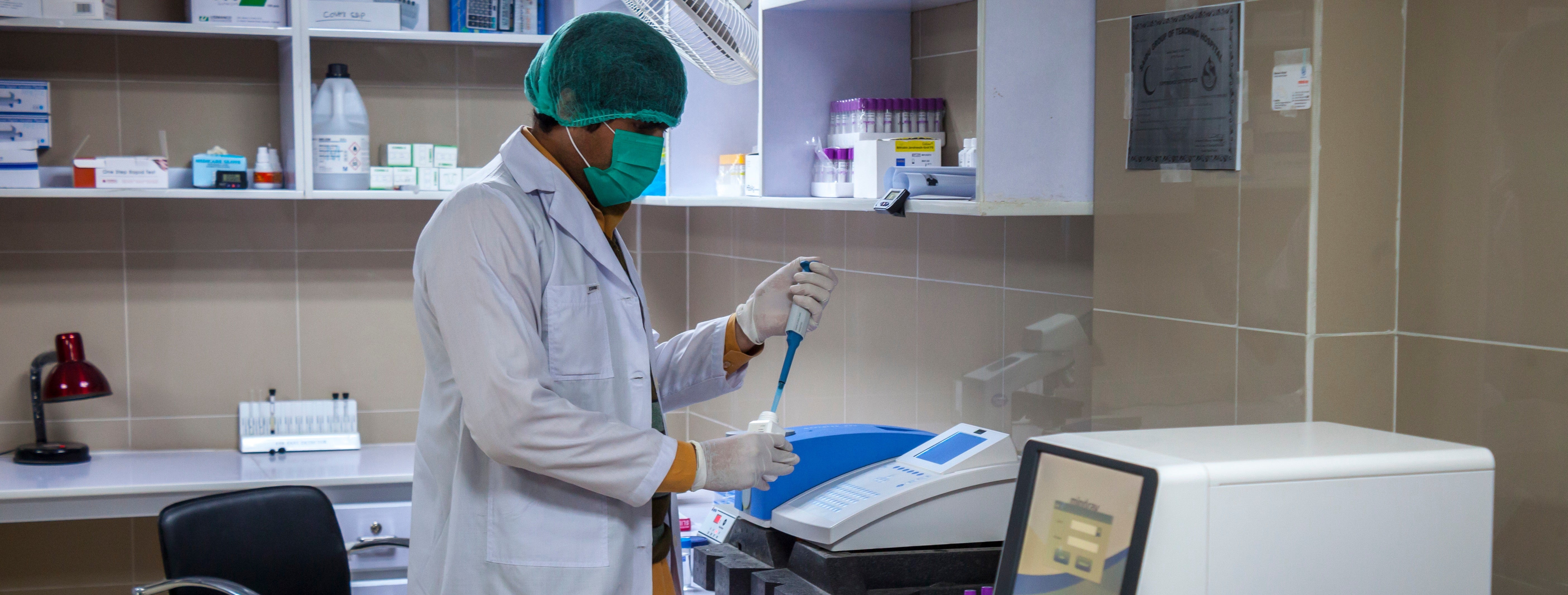 Un technicien de laboratoire au sein d'un hôpital. Photo : © Tariq siddiq Kohistani/Shutterstock
Un technicien de laboratoire au sein d'un hôpital. Photo : © Tariq siddiq Kohistani/Shutterstock
By now we are all familiar with the sight of empty shelves in supermarkets and pharmacies where masks, respirators, and gloves used to be. Fear and hoarding magnify scarcity.
Less visibly, similar dynamics are playing out at a global level— with some countries saving their supplies for their own citizens. The consequences of such actions are far-reaching and life-threatening. Even in its heyday, the World Trade Organization (WTO) struggled to prevent such behavior. New initiatives are necessary.
The spread of the coronavirus is driving up the prices of medical supplies as production struggles to meet demand. Media reports indicate that prices of face masks and respirators on Amazon have increased five times since the end of January.
To retain production of essential supplies for domestic consumers, several countries have imposed restrictions on exports of medical products. They hope to avoid domestic shortages and keep prices stable during the coronavirus crisis. As the virus advances, export protectionism is likely to infect even more countries.
Restrictive actions by exporters reduce global supply, leading to higher prices. This provokes new export restrictions to insulate domestic markets, generating a “multiplier effect” on world prices.
Economics and recent experience show that these measures ultimately hurt all countries, particularly the more fragile. Restrictive actions by exporters reduce global supply, leading to higher prices. This provokes new export restrictions to insulate domestic markets, generating a “multiplier effect” on world prices.
Such a sequence is more likely in the concentrated markets for certain medical products. For example, seven countries account for 70 percent of world exports of ventilators for artificial respiration—vital for the treatment of coronavirus. If even one of them were to ban exports, prices could increase by up to 10 percent in the short run, and by much more if other countries react.
Health care in importing countries will immediately suffer due to the resulting scarcity and higher prices. Particularly in poorer countries, with limited domestic production capacity, export restrictions on medicines and equipment could be deadly. But exporters may eventually lose out too when world prices spiral up. As in a stadium, if all persons stand up to see better, everyone is less comfortable but no one gets a better view. Prices would be higher than need be, and supplies would be distributed neither efficiently nor equitably.
We should have learned from recent experience about such perverse effects. When world prices shot up in in 2008-2011, governments worldwide imposed 85 new export restrictions on food products. Research showed that these actions pushed world food prices up by another 13 percent on average—and by 45 percent for rice.
If, in bad times, importing countries are shut out by producing countries, trade will be seen as an unreliable way of securing access to essential products.
There are also longer-term consequences. If, in bad times, importing countries are shut out by producing countries, trade will be seen as an unreliable way of securing access to essential products. Self-sufficiency through protection in good times will seem the best insurance against scarcity in bad times, as some are already arguing is the case for essential medicines.
Any shift away from openness, however, will be costly for all. Medical supplies will cost more, and variety and quality will suffer, as we lose the benefits of scale and specialization through trade. For example, the production of bulk drugs at scale in China and their incorporation into specific formulations in India has reduced prices and improved access worldwide.
We must ensure that trade flows freely in good times and bad. While the WTO has regulated import barriers, countries remain largely free to restrict exports. To deal with this gap, WTO members—or at least the G20 countries—could agree not to restrict exports of coronavirus-related medical products. Consuming countries could do their part too by liberalizing imports. For example, 46 developing countries tax their own health care by imposing on respirators tariffs of between 5 and 25 percent. Eliminating both export restrictions and tariffs on medical products could produce substantial long-term gains.
But openness to trade may not be enough. In parallel, a precedent in medicine could be adapted for the current situation. Traditionally, public-private partnerships like the Meningitis Vaccine Project have been established to create new drugs or improve access to drugs where prices are high because of intellectual property rights. International organizations could catalyze similar collaboration to expand the supply of key medical products to deal with the coronavirus.
Private companies could be directly contracted to expand production to fulfill the needs of developing countries. Some such initiatives are already underway. But to generate the greatest benefits, aid-for-production should be given to countries based not on consumer need but on producer comparative advantage. The chosen locations would benefit from new investment and jobs, but would be required to keep trade completely free. Openness would ensure that essential medical products are produced where it is most efficient and flow to where they are most needed.
Deeper international cooperation will be the most effective vaccine against viral protectionism.
An edited version of this piece was published in the Financial Times.



Join the Conversation